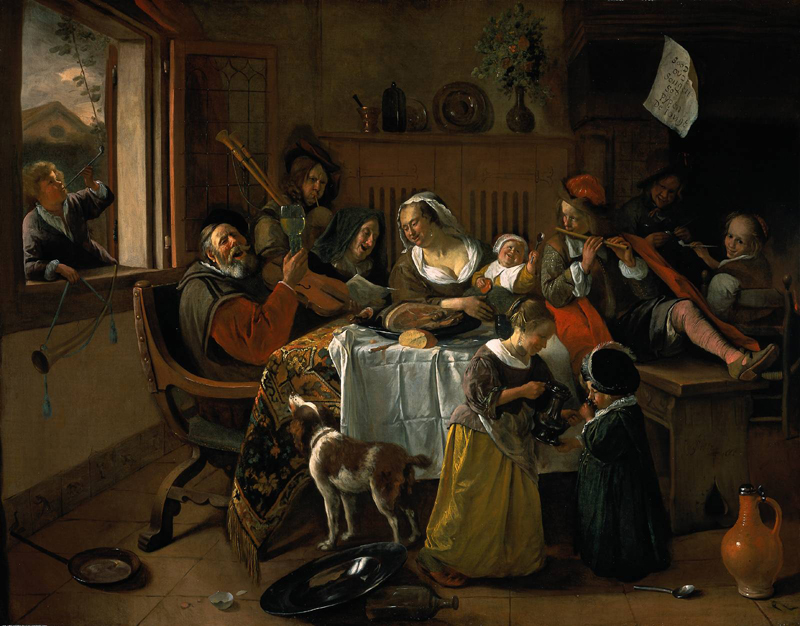"Home" was born around 1609 in the United Provinces of the Netherlands Spain Rome
 |
| "The Merry Family" by Jan Steen, 1668 |
The word “home” connotes both a physical place and the more abstract notion of a state of being. Both meanings of the English home have identical definitions in German, Danish, Swedish, Icelandic, and Dutch, all of which are derived from the Old Norse heima. “Home” both refers to the house – the domus – and the household. Home is “…of dwelling and of refuge, of ownership and of affection” (Witold Rybczynski, Home).
Before the Netherlands
 |
| Rembrandt's sketch "Interior with Saskia in Bed" |
We have the ability to make a place “feel like home.” Ivan Illich said that “all living is dwelling. …To dwell means to live the traces that past living has left. The traces of dwellings survive, as do the bones of people.”
 |
| Neolithic village of Skara Brae, Scotland, circa 3100-2500 BC |